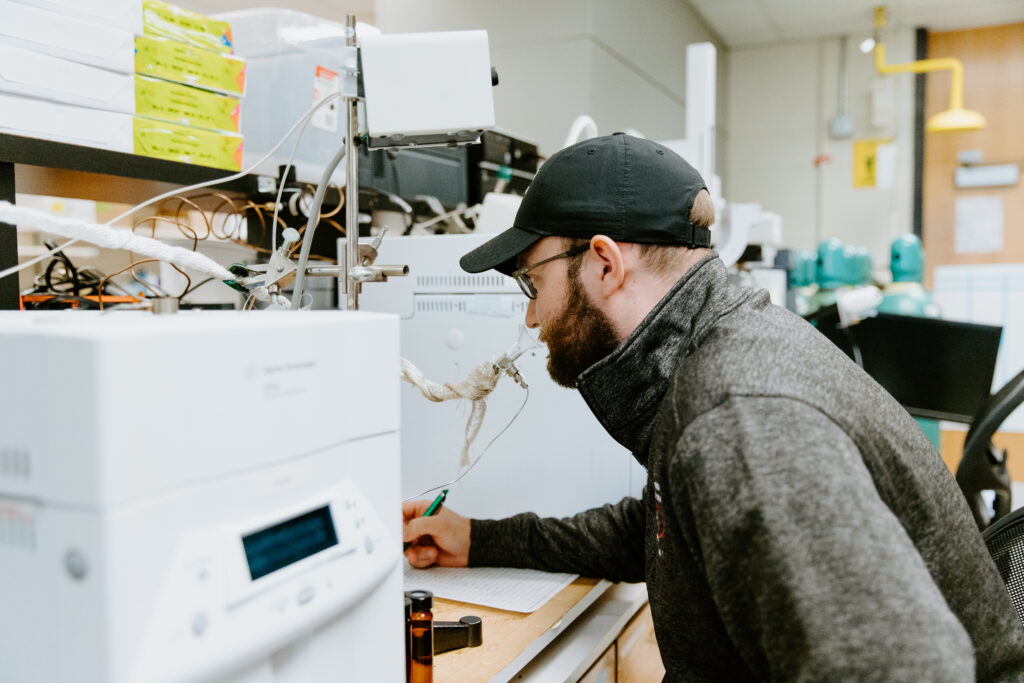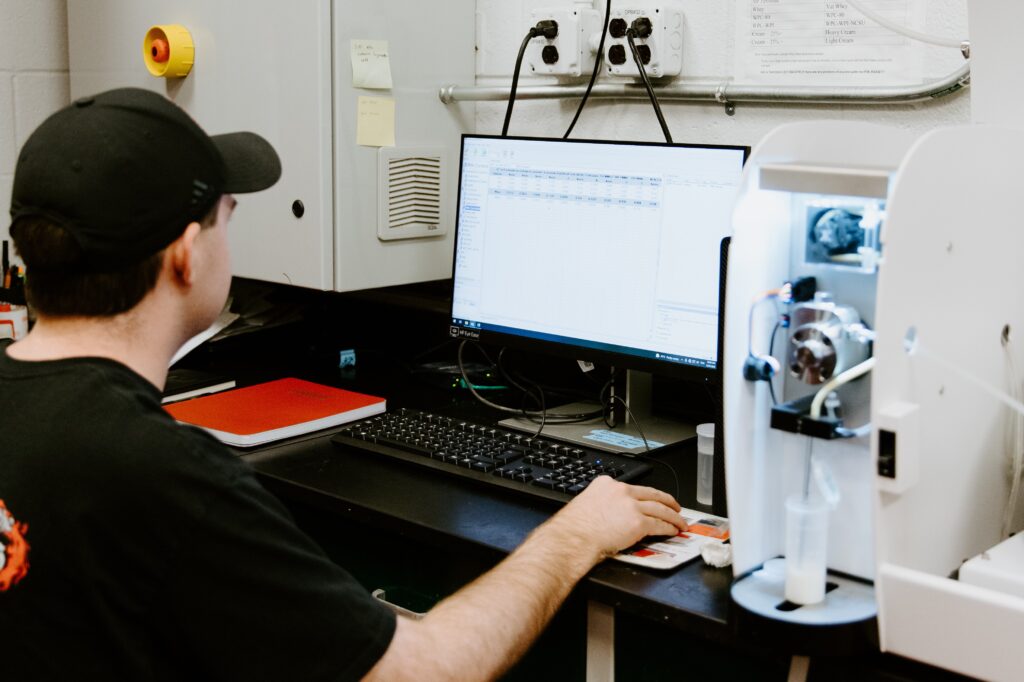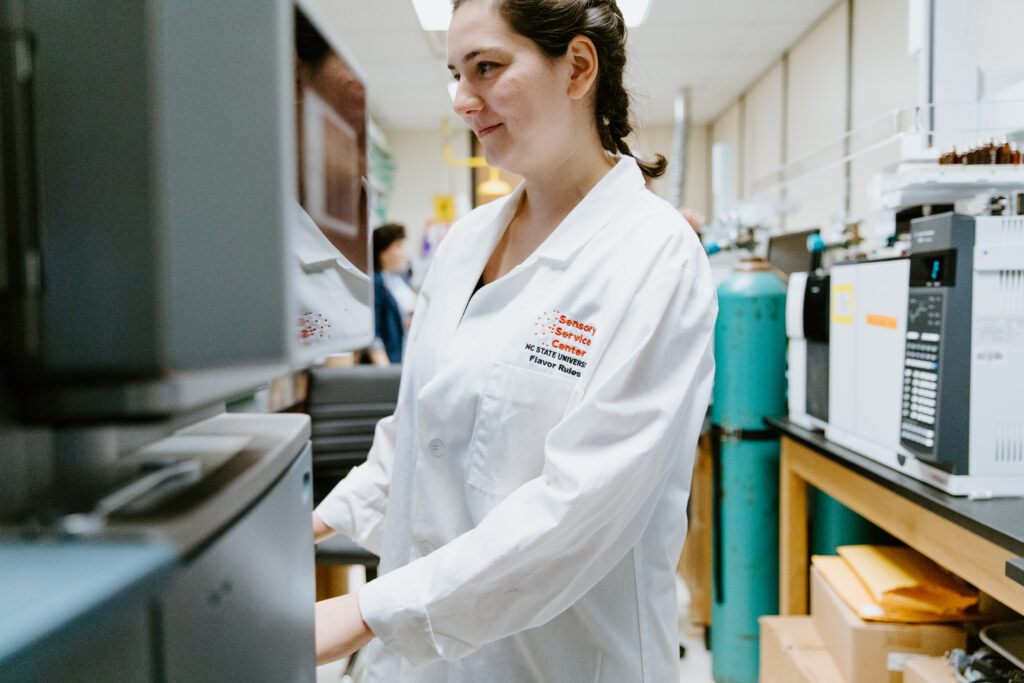Instrumental Analysis
Volatile Compound Analysis
Volatile organic compound (VOC) analysis identifies compounds in products that could be contributing to off aromas desirable flavors. The Sensory Service Center offers comprehensive flavor analysis, including volatile compound testing coupled to sensory analysis (which ensure our analysis is coupled to actual products flavor) to help you track down and eliminate off flavors and prevent further consumer complaints.
For VOC testing, we offer both headspace (SPME) and solvent extraction (DSE SAFE) techniques in conjunction with gas chromatography mass spectrometry (GC-MS) and gas chromatography olfactometry (GC-O). Five GC-MS machines with auto samplers and two GC-FIDs with olfactory sniffer ports are available to ensure high throughput analysis and quick results delivery. One of our machines is equipped with a triple quad GG/MS/MS with a sulfur detector, allowing for accurate measurement of low levels of sulfur-containing flavor compounds. We utilize GC-O to refine our GC-MS identification and link sensory to instrumental volatile analysis. This is significant: we perform sensory analysis with our trained panel and that same set of sensory experts run the instrumental analysis. This provides consistency through the experience, bridging a gap and adding a level of accuracy – for example, linking compounds or groups of compounds to specific aromas and off-flavors – that you can’t get when these tests are run independently.
Non-Volatile Analytical Services
Non-volatile analysis tests quality markers in food that are non-aroma sensory components – things such as organic acids and sugars, protein or fat levels, or even how much oxygen is in the food’s package – that may affect flavor.
We can perform the following tests to measure and give you accurate component values, enabling you to make decisions around improvements to product quality:
- Extraction and quantification of norbixin, organic acids, benzoic acid, beta carotene, and sugars by high-performance liquid chromatography (HPLC). We measure quality markers by utilizing chromatographic separation and sensitive detection of analytes of interest.
- Vitamin analysis by ultra-performance liquid chromatography (UPLC) with photodiode array (PDA) or fluoresence (FLR) detector
- Phospholipid analysis by UPLC with evaporative light scattering (ELS) detector
- In-package oxygen percentage measurement. Specialized testing is available for oxygen level determination in reduced oxygen packaging from 0.1% to 100%.
- Dairy fat by Mojonnier. We use a specialized centrifuge available for routine measurement of butter fat in dairy products.
- Spectrophotometry. Many food components yield different absorbance in the ultraviolet (UV) and visible range. Our lab can work up and run scanning and single wave length spectrophotometric methods, including enzyme kinetics, and turn around quick results.


